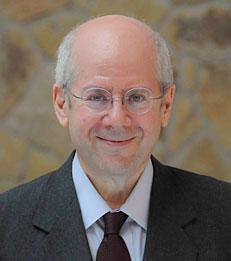Opinion
The stubbornly high cost of remittances
—


That said, the goal of reducing the cost of small remittances to 5% is clearly within reach.
By Kim Schoenholtz and Stephen Cecchetti
"With the implementation of ‘know your client’ rules, anti-money laundering efforts, and so on, it has become increasingly difficult to have an efficient payments system. Many banks have retired from the business, for example, of handling remittances, which are a very important source of income for many emerging markets.”
Guillermo Ortiz, 19 March 2015.
When migrants send money across borders to their families, it promotes economic activity and supports incomes in some of the poorest countries of the world. Annual cross-border remittances are running about $600 billion, three quarters of which flow to low- and middle-income countries. To put that number into perspective, total development assistance worldwide is $150 billion.2 Indeed, for many countries, these transfers account for a significant fraction of people’s incomes. For example, in Guatemala, the Philippines, and Senegal, remittances exceed 10% of GDP.
Yet, despite the remarkable technological advances of recent decades, remittances remain extremely expensive. The virtues of domestic payments systems like Zelle, an inexpensive, bank-run means for person-to-person transfers up to several thousand dollars, are very clear (Cecchetti and Schoenholtz 2017b). The marginal cost of using Zelle is zero – that is, for customers of the bank, there is no charge.
Cross-border remittances are far from costless. On average, the charge for sending $200 – the benchmark used by authorities to evaluate cost – is $14. That is, the combination of fees (including charges from both the sender and recipient intermediaries) and the exchange rate margin typically eats up fully 7% of the amount sent. It is less expensive to send larger amounts, with the global average cost of sending $500 at just under 5% (World Bank 2017b). Even so, the aggregate cost of sending remittances in 2017 was about $30 billion, roughly equivalent to the total non-military foreign aid budget of the US!
Read the full article as published by VoxEU.
___
Kim Schoenholtz is the Henry Kaufman Professor of the History of Financial Institutions and Markets in the Economics Department and Director of the Center for Global Economy and Business.
Guillermo Ortiz, 19 March 2015.
When migrants send money across borders to their families, it promotes economic activity and supports incomes in some of the poorest countries of the world. Annual cross-border remittances are running about $600 billion, three quarters of which flow to low- and middle-income countries. To put that number into perspective, total development assistance worldwide is $150 billion.2 Indeed, for many countries, these transfers account for a significant fraction of people’s incomes. For example, in Guatemala, the Philippines, and Senegal, remittances exceed 10% of GDP.
Yet, despite the remarkable technological advances of recent decades, remittances remain extremely expensive. The virtues of domestic payments systems like Zelle, an inexpensive, bank-run means for person-to-person transfers up to several thousand dollars, are very clear (Cecchetti and Schoenholtz 2017b). The marginal cost of using Zelle is zero – that is, for customers of the bank, there is no charge.
Cross-border remittances are far from costless. On average, the charge for sending $200 – the benchmark used by authorities to evaluate cost – is $14. That is, the combination of fees (including charges from both the sender and recipient intermediaries) and the exchange rate margin typically eats up fully 7% of the amount sent. It is less expensive to send larger amounts, with the global average cost of sending $500 at just under 5% (World Bank 2017b). Even so, the aggregate cost of sending remittances in 2017 was about $30 billion, roughly equivalent to the total non-military foreign aid budget of the US!
Read the full article as published by VoxEU.
___
Kim Schoenholtz is the Henry Kaufman Professor of the History of Financial Institutions and Markets in the Economics Department and Director of the Center for Global Economy and Business.
